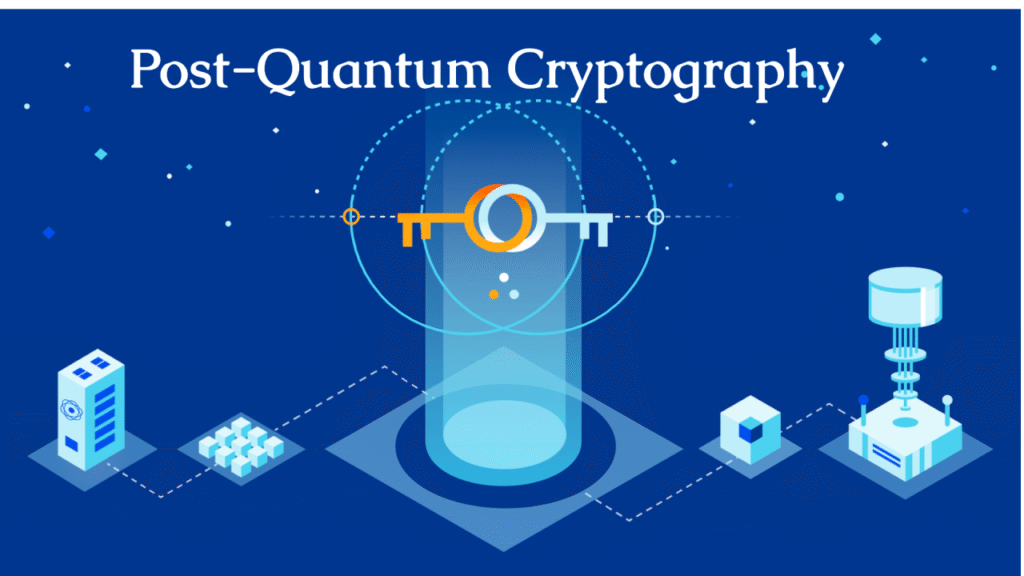The cybersecurity world is racing against an invisible clock—the moment when quantum computers will render current encryption standards obsolete. With 53% of organizations already experiencing quantum-related security incidents (Ponemon Institute 2024) and the first functional quantum computers expected by 2030, the transition to post-quantum cryptography (PQC) has become the most urgent challenge in digital security.
This comprehensive guide explores the imminent quantum threat, analyzes next-generation cryptographic solutions, and provides a step-by-step migration roadmap for enterprises preparing for the post-quantum era.
1. The Quantum Threat Landscape: Why Current Encryption Will Fail
A. How Quantum Computers Break Encryption
- Shor’s Algorithm: Can factor large primes in minutes vs. billions of years for classical computers
- RSA-2048: Breakable in 8 hours with 1M-qubit quantum computer (MIT)
- ECC Cryptography: Equally vulnerable to quantum attacks
- Grover’s Algorithm: Cuts AES-256 security to AES-128 equivalent
B. Harvest Now, Decrypt Later (HNDL) Attacks
- State-sponsored actors already collecting encrypted data for future decryption
- Average data shelf-life: 25 years (financial/health/government records)
- Critical systems at risk:
- Blockchain networks
- Military communications
- Financial transactions
2. Post-Quantum Cryptography: Next-Gen Algorithms
NIST-Approved PQC Standards (2024)
| Algorithm Type | Examples | Security Level | Performance |
|---|---|---|---|
| Lattice-based | CRYSTALS-Kyber (Key Exchange) | 128-bit | Fastest implementation |
| Hash-based | SPHINCS+ (Digital Signatures) | 256-bit | Slow but ultra-secure |
| Code-based | Classic McEliece | 256-bit | Large key sizes |
| Multivariate | Rainbow | 128-bit | Patent concerns |
Comparative Analysis
- Kyber: Best for TLS/SSL (adopted by Cloudflare, Google)
- Dilithium: Ideal for digital signatures (NIST’s primary recommendation)
- Falcon: Compact signatures for IoT devices
3. The Quantum Migration Roadmap (2024-2030)
Phase 1: Crypto-Agility Preparation (Now-2025)
- Inventory cryptographic assets (TLS, VPNs, code signing)
- Test PQC algorithms in lab environments
- Prioritize systems by sensitivity and lifespan
Phase 2: Hybrid Deployment (2025-2027)
- Run classical + PQC algorithms in parallel
- Update PKI infrastructure for dual certificates
- AWS/GCP/Azure expected to offer PQC-as-a-service
Phase 3: Full Transition (2028-2030)
- Deprecate vulnerable algorithms (RSA, ECC)
- FIPS 140-3 certification for PQC modules
- Legacy system upgrades or retirement
4. Industry-Specific Impacts & Timelines
Financial Services
- SWIFT: Mandating PQC for payment systems by 2026
- Blockchain: Ethereum’s “Quantum Resistance” hard fork planned for 2025
Healthcare
- HIPAA updates: Requiring PQC for PHI by 2027
- Medical IoT: FDA guidance on quantum-safe device encryption
Government
- NSA’s CNSA 2.0: Full PQC transition for classified systems by 2028
- EU Quantum Flagship: €1B investment in PQC standardization
5. Challenges in PQC Adoption
Technical Hurdles
- Key size explosion: McEliece public keys = 1MB+
- Performance overhead: 2-10x slower than ECC
- IoT limitations: Many devices lack compute resources
Organizational Barriers
- Cost estimates: $250K-$5M per enterprise for full migration
- Skills gap: Only 12% of security teams trained in PQC
- Vendor readiness: 65% of security products lack PQC support (Gartner)
6. Preparing Your Organization
Immediate Actions
- Conduct crypto inventory with tools like Keyfactor or Venafi
- Join NIST’s PQC standardization working groups
- Test hybrid solutions with Cloudflare’s PQ-enabled network
Long-Term Strategy
✅ Develop crypto-agile architecture
✅ Budget $1M+ for multi-year transition
✅ Train staff on PQC fundamentals
Warning: Organizations delaying PQC prep until 2027 face 10x higher migration costs due to rushed implementations.
7. The Future Beyond PQC
Quantum Key Distribution (QKD)
- China’s 4,600km quantum network
- Commercial QKD satellites (planned by 2026)
Quantum Random Number Generators
- Unhackable entropy sources
- Already deployed in Swiss banking systems
Neuromorphic Encryption
- AI-driven adaptive cryptography
- Self-evolving algorithms resistant to quantum attacks
Conclusion: The Post-Quantum Countdown Has Begun
By 2025, all enterprises should:
- Complete cryptographic asset audits
- Begin PQC pilot programs
- Train security teams on quantum threats
By 2027, expect:
- Regulatory mandates for critical infrastructure
- First quantum decryption attacks on archived data
- Mainstream PQC adoption across cloud providers


